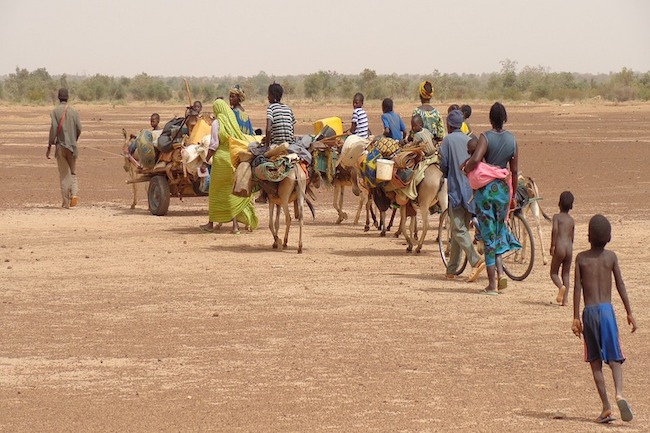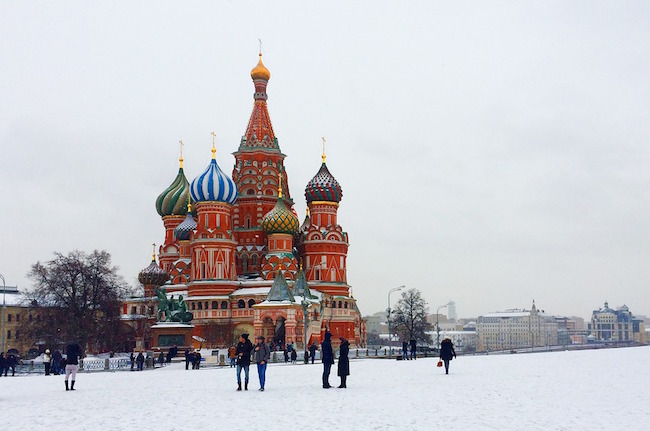After Kazakhstan, the color revolution era is over by for Ron Paul Institute
The year 2022 started with Kazakhstan on fire, a serious attack against one of the key hubs of Eurasian integration. We are only beginning to understand what and how it happened.
On Monday morning, leaders of the Collective Security Treaty Organization (CSTO) held an extraordinary session to discuss Kazakhstan.
Kazakh President Kassym-Jomart Tokayev framed it succinctly. Riots were “hidden behind unplanned protests.” The goal was “to seize power” – a coup attempt. Actions were “coordinated from a single center.” And “foreign militants were involved in the riots.”
Russian President Vladimir Putin went further: during the riots, “Maidan technologies were used,” a reference to the Ukranian square where 2013 protests unseated a NATO-unfriendly government.
Defending the prompt intervention of CSTO peacekeeping forces in Kazakhstan, Putin said, “it was necessary to react without delay.” The CSTO will be on the ground “as long as necessary,” but after the mission is accomplished, “of course, the entire contingent will be withdrawn from the country.” Forces are expected to exit later this week.
But here’s the clincher: “CSTO countries have shown that they will not allow chaos and ‘color revolutions’ to be implemented inside their borders.”
Putin was in synch with Kazakh State Secretary Erlan Karin, who was the first, on the record, to apply the correct terminology to events in his country: What happened was a “hybrid terrorist attack,” by both internal and external forces, aimed at overthrowing the government.
The tangled hybrid web
Virtually no one knows about it. But last December, another coup was discreetly thwarted in the Kyrgyz capital, Bishkek. Kyrgyz intel sources attribute the engineering to a rash of NGOs linked with Britain and Turkey. That introduces an absolutely key facet of The Big Picture: NATO-linked intel and their assets may have been preparing a simultaneous color revolution offensive across Central Asia.
On my Central Asia travels in late 2019, pre-Covid, it was plain to see how western NGOs – Hybrid War fronts – remained extremely powerful in both Kyrgyzstan and Kazakhstan. Yet, they are just one nexus in a western nebulae of Hybrid War fog deployed across Central Asia, and West Asia for that matter. Here we see the CIA and the US Deep State crisscrossing MI6 and different strands of Turkish intel.
When President Tokayev was referring, in code, to a “single center,” he meant a so far ‘secret’ US-Turk-Israeli military-intel operations room based in the southern business hub of Almaty, according to a highly placed Central Asia intel source. In this “center,” there were 22 Americans, 16 Turks and 6 Israelis coordinating sabotage gangs – trained in West Asia by the Turks – and then rat-lined to Almaty.
The op started to unravel for good when Kazakh forces – with the help of Russian/CSTO intel – retook control of the vandalized Almaty airport, which was supposed to be turned into a hub for receiving foreign military supplies.
The Hybrid War west had to be stunned and livid at how the CSTO intercepted the Kazakh operation at such lightning speed. The key element is that the secretary of Russian National Security Council, Nikolai Patrushev, saw the Big Picture eons ago.
So, it’s no mystery why Russia’s aerospace and aero-transported forces, plus the massive necessary support infrastructure, were virtually ready to go.
Back in November, Patrushev’s laser was already focused on the degrading security situation in Afghanistan. Tajik political scientist Parviz Mullojanov was among the very few who were stressing that there were as many as 8,000 imperial machine Salafi-jihadi assets, shipped by a rat line from Syria and Iraq, loitering in the wilds of northern Afghanistan.
That’s the bulk of ISIS-Khorasan – or ISIS reconstituted near the borders of Turkmenistan. Some of them were duly transported to Kyrgyzstan. From there, it was very easy to cross the border from Bishek and show up in Almaty.
It took no time for Patrushev and his team to figure out, after the imperial retreat from Kabul, how this jihadi reserve army would be used: along the 7,500 km-long border between Russia and the Central Asian ‘stans’.
That explains, among other things, a record number of preparation drills conducted in late 2021 at the 210th Russian military base in Tajikistan.
James Bond speaks Turkish
The breakdown of the messy Kazakh op necessarily starts with the usual suspects: the US Deep State, which all but “sang” its strategy in a 2019 RAND corporation report, Extending Russia. Chapter 4, on “geopolitical measures”, details everything from “providing lethal aid to Ukraine”, “promoting regime change in Belarus”, and “increasing support for Syrian rebels” – all major fails – to “reducing Russian influence in Central Asia.”
That was the master concept. Implementation fell to the MI6-Turk connection.
The CIA and MI6 had been investing in dodgy outfits in Central Asia since at least 2005, when they encouraged the Islamic Movement of Uzbekistan (IMU), then close to the Taliban, to wreak havoc in southern Kyrgyzstan. Nothing happened.
It was a completely different story by May 2021, when the MI6’s Jonathan Powell met the leadership of Jabhat al-Nusra – which harbors a lot of Central Asian jihadis – somewhere in the Turkish-Syrian border near Idlib. The deal was that these ‘moderate rebels’ – in US terminology – would cease to be branded ‘terrorists’ as long as they followed the anti-Russia NATO agenda.
That was one of the key prep moves ahead of the jihadist ratline to Afghanistan – complete with Central Asia branching out.
The genesis of the offensive should be found in June 2020, when former ambassador to Turkey from 2014 to 2018, Richard Moore, was appointed head of MI6. Moore may not have an inch of Kim Philby’s competence, but he does fit the profile: rabid Russophobe, and a cheerleader of the Great Turania fantasy, which promotes a pan-Turk confederation of Turkic-speaking peoples from West Asia and the Caucasus to Central Asia and even Russian republics in the Volga.
MI6 is deeply entrenched in all the ‘stans’ except autarchic Turkmenistan – cleverly riding the pan-Turkist offensive as the ideal vehicle to counter Russia and China.
Erdogan himself has been invested on a hardcore Great Turania offensive, especially after the creation of the Turkic Council in 2009. Crucially, next March, the summit of the Confederation Council of Turkic-speaking States – the new Turkic Council denomination – will take place in Kazakhstan. The city of Turkestan, in southern Kazakhstan, is expected to be named as the spiritual capital of the Turkic world.
And here, the ‘Turkic world’ enters into a frontal clash with the integrating Russian concept of Greater Eurasia Partnership, and even with the Shanghai Cooperation Organization (SCO) that, crucially, does not count Turkey as a member.
Erdogan’s short term ambition seems at first to be only commercial: after Azerbaijan won the Karabakh war, he expects to use Baku to get access to Central Asia via the Caspian Sea, complete with Turkey’s industrial-military complex sales of military technology to Kazakhstan and Uzbekistan.
Turkish companies are already investing heavily in real estate and infrastructure. And in parallel, Ankara’s soft power is on overdrive, finally collecting the fruits of exercising a lot of pressure, for instance, to speed up the transition in Kazakhstan from Cyrillic script to the Latin alphabet, starting in 2023.
Yet both Russia and China are very much aware that Turkey essentially represents NATO entering Central Asia. The organization of Turkic states are cryptically called the Kazakh operation ‘fuel protests’.
It’s all very murky. Erdogan’s neo-Ottomanism – which comes with massive cheerleading by his Muslim Brotherhood base – essentially has nothing to do with the pan-Turanic drive, which is a racialist movement predicating domination by relatively ‘pure’ Turks.
The problem is that they are converging while becoming more extreme, with Turkey’s right-wing Grey Wolves deeply implicated. That explains why Ankara intel is a sponsor and, in many cases, a weaponizer of both the ISIS-Khorasan franchise and those Turan racists, from Bosnia to Xinjiang via Central Asia.
The Empire handsomely profits from this toxic association, in Armenia, for instance. And the same would happen in Kazakhstan if the operation is successful.
Read the whole article here.




